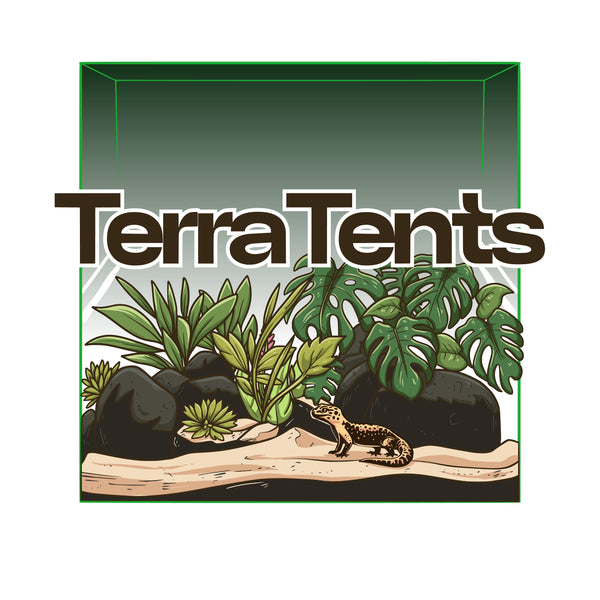Creating a Stable Habitat: Why Controlled Environments are Key for Reptile Health
Share
For reptile enthusiasts, providing a safe and healthy environment for their pets is paramount. Reptiles, unlike more common pets, are cold-blooded and depend entirely on their environment to regulate their body temperature and maintain their health. In the wild, reptiles have access to a wide range of natural habitats that offer the right mix of humidity, temperature, and light. But in captivity, creating a stable environment that replicates these conditions can be challenging. This is where controlled enclosures come into play, offering reptile owners a reliable way to recreate these essential conditions.
In this blog, we’ll explore why a stable habitat is crucial for reptile health, the unique needs of different species, and how modern enclosures can help meet these needs.
#### **Understanding the Reptile's Needs**
Reptiles have specific environmental needs that vary depending on their species, natural habitat, and lifestyle. For example, desert reptiles like bearded dragons require high temperatures and low humidity, while tropical reptiles like chameleons need both warmth and high humidity levels. Without these specific conditions, reptiles can suffer from health problems, including respiratory infections, dehydration, and improper growth.
Temperature plays a central role in a reptile's metabolism, digestion, and immune system function. If temperatures are too low, their body functions slow down, which can lead to problems such as digestion issues, lethargy, and a weakened immune system. Humidity is also critical, as it affects skin health, respiratory health, and hydration levels. Many reptiles are sensitive to changes in humidity, and without proper control, they can easily become dehydrated or develop respiratory issues.
#### **How Controlled Enclosures Work**
Modern enclosures are designed to simplify the task of recreating these stable conditions. They come equipped with built-in heating and humidity control systems, allowing pet owners to fine-tune the environment to meet the specific needs of their reptiles. For example, high-quality enclosures often feature heating domes with dimmer controls, which allow for precise temperature adjustments. This is especially beneficial in preventing extreme temperature fluctuations, which can be harmful to reptiles.
Humidity control is another critical feature. Many enclosures are designed with adjustable vents, misting systems, or even integrated humidifiers to maintain the right humidity level. Some also feature built-in hygrometers, making it easy for owners to monitor and adjust humidity as needed.
These features make it possible to create a microclimate that is consistent and controlled. Unlike traditional tanks, where it can be difficult to keep the temperature and humidity stable, modern enclosures reduce the need for constant adjustments and make it much easier to maintain optimal conditions.
#### **Benefits of Stability**
The importance of stability cannot be overstated. When reptiles experience fluctuating temperatures and humidity levels, they can become stressed, leading to health problems over time. Stability in their environment allows reptiles to relax and engage in natural behaviors, which contributes to their overall well-being.
For instance, stable environments can prevent shell deformities, such as pyramiding in tortoises. Pyramiding occurs when young tortoises are exposed to low humidity, causing abnormal shell growth. By keeping a consistent 80% humidity level, owners can prevent this issue and promote healthy shell development. Additionally, stable conditions reduce the risk of respiratory infections, which can occur when humidity is either too high or too low for the species.
#### **Choosing a Controlled Enclosure**
Investing in a quality, controlled enclosure is one of the best things you can do for your reptile. But not all enclosures are created equal. When choosing a controlled enclosure, there are a few key features to consider:
1. **Built-In Heating and Humidity Control:** Look for enclosures with integrated systems that allow you to monitor and adjust these settings easily.
2. **Adjustable Vents:** These can help control airflow, preventing mold growth and keeping humidity levels consistent.
3. **Material Quality:** Choose enclosures made from durable materials that retain heat and are resistant to wear and tear.
4. **Ease of Maintenance:** Look for enclosures with accessible doors or removable trays that make cleaning easy and prevent the buildup of bacteria.
By considering these factors, you’ll be more likely to find an enclosure that meets the needs of your reptile and fits your lifestyle as a pet owner.
#### **Conclusion**
Creating a stable habitat for reptiles is essential for their health and longevity. Controlled environments allow reptile owners to recreate the natural habitats their pets need to thrive, offering precise control over temperature, humidity, and ventilation. This stability reduces stress, prevents common health issues, and supports the growth and well-being of reptiles in captivity.
As a reptile owner, investing in a high-quality, controlled enclosure is one of the best steps you can take to ensure your pet’s health. Not only does it simplify the task of maintaining a stable environment, but it also gives you peace of mind, knowing your pet is safe, comfortable, and thriving.
